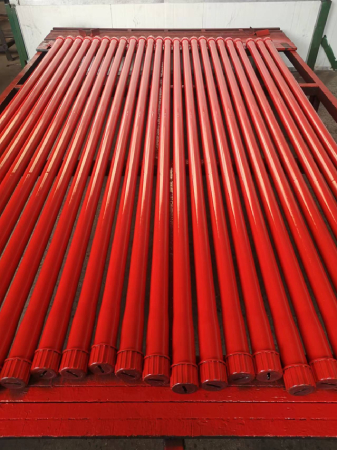- Afrikaans
- Albanian
- Amharic
- Arabic
- Armenian
- Azerbaijani
- Basque
- Belarusian
- Bengali
- Bosnian
- Bulgarian
- Catalan
- Cebuano
- Corsican
- Croatian
- Czech
- Danish
- Dutch
- English
- Esperanto
- Estonian
- Finnish
- French
- Frisian
- Galician
- Georgian
- German
- Greek
- Gujarati
- Haitian Creole
- hausa
- hawaiian
- Hebrew
- Hindi
- Miao
- Hungarian
- Icelandic
- igbo
- Indonesian
- irish
- Italian
- Japanese
- Javanese
- Kannada
- kazakh
- Khmer
- Rwandese
- Korean
- Kurdish
- Kyrgyz
- Lao
- Latin
- Latvian
- Lithuanian
- Luxembourgish
- Macedonian
- Malgashi
- Malay
- Malayalam
- Maltese
- Maori
- Marathi
- Mongolian
- Myanmar
- Nepali
- Norwegian
- Norwegian
- Occitan
- Pashto
- Persian
- Polish
- Portuguese
- Punjabi
- Romanian
- Russian
- Samoan
- Scottish Gaelic
- Serbian
- Sesotho
- Shona
- Sindhi
- Sinhala
- Slovak
- Slovenian
- Somali
- Spanish
- Sundanese
- Swahili
- Swedish
- Tagalog
- Tajik
- Tamil
- Tatar
- Telugu
- Thai
- Turkish
- Turkmen
- Ukrainian
- Urdu
- Uighur
- Uzbek
- Vietnamese
- Welsh
- Bantu
- Yiddish
- Yoruba
- Zulu
stainless steel reducer coupling
The Importance of Stainless Steel Reducer Couplings in Industrial Applications
Stainless steel reducer couplings are essential components in various industrial applications, offering both versatility and reliability. These fittings are designed to connect two pipes of different diameters, allowing for smooth transitions and efficient flow of liquids or gases. Their robust construction and resistance to corrosion make them an ideal choice for many industries, including plumbing, construction, and oil and gas.
What is a Stainless Steel Reducer Coupling?
A stainless steel reducer coupling is a type of fitting used in piping systems that connects two pipes of different diameters. The coupling gradually decreases in size from one end to the other, allowing for a smooth transition between pipe sizes. This feature minimizes turbulence and pressure loss in the flow, ensuring that the system operates efficiently. Made from high-quality stainless steel, these couplings are known for their durability, strength, and resistance to rust and corrosion.
Advantages of Stainless Steel Reducer Couplings
One of the primary advantages of stainless steel reducer couplings is their exceptional resistance to corrosion. Unlike standard steel fittings, which may degrade over time in the presence of moisture or chemicals, stainless steel maintains its integrity under various environmental conditions. This is particularly important in industries such as food processing and pharmaceuticals, where hygiene and safety are critical. The non-reactive nature of stainless steel also ensures that it does not contaminate the substances flowing through the pipes.
Another benefit is their ability to withstand high pressures and temperatures. Stainless steel is known for its high tensile strength, making it suitable for applications involving steam, gas, or liquids at elevated pressures. This capability extends the lifespan of the piping system, reduces maintenance costs, and enhances overall efficiency.
stainless steel reducer coupling

Applications in Various Industries
Stainless steel reducer couplings are utilized in numerous applications across several industries. In the construction sector, they are commonly used in plumbing systems for water supply and drainage. Their ability to connect pipes of varying sizes allows for flexible design and installation, accommodating various building layouts.
In the oil and gas industry, these fittings are critical for transporting crude oil, natural gas, and refined products. Their robust construction ensures safety and reliability in transporting hazardous materials, where failure of fittings could lead to leaks or explosions.
The food and beverage industry also relies heavily on stainless steel reducer couplings. The smooth interior surfaces of these fittings prevent food particles from adhering, minimizing the risk of contamination and ensuring hygienic transportation of products. Moreover, they can withstand the cleaning processes required in these environments without significant wear.
In chemical processing, the use of stainless steel materials is vital due to the aggressive nature of many chemicals. Reducer couplings made from stainless steel can handle corrosive substances without sourcing additional protective coatings, thus simplifying the design and reducing costs.
Conclusion
In conclusion, stainless steel reducer couplings play an indispensable role in modern industrial piping systems. Their unique characteristics—such as corrosion resistance, high pressure tolerance, and versatility—make them suitable for a wide range of applications. As industries continue to evolve, the demand for reliable and durable fittings will only increase. Investing in high-quality stainless steel reducer couplings ensures that systems operate efficiently and safely, ultimately leading to enhanced productivity and reduced operational costs. Whether in construction, oil and gas, food processing, or chemical manufacturing, the importance of these fittings cannot be overstated. Their ability to facilitate smooth transitions in piping systems underscores their value as a fundamental component in today’s industrial landscape.
-
Tubing Pup Joints: Essential Components for Oil and Gas OperationsNewsJul.10,2025
-
Pup Joints: Essential Components for Reliable Drilling OperationsNewsJul.10,2025
-
Pipe Couplings: Connecting Your World EfficientlyNewsJul.10,2025
-
Mastering Oilfield Operations with Quality Tubing and CasingNewsJul.10,2025
-
High-Quality Casing Couplings for Every NeedNewsJul.10,2025
-
Boost Your Drilling Efficiency with Premium Crossover Tools & Seating NipplesNewsJul.10,2025







